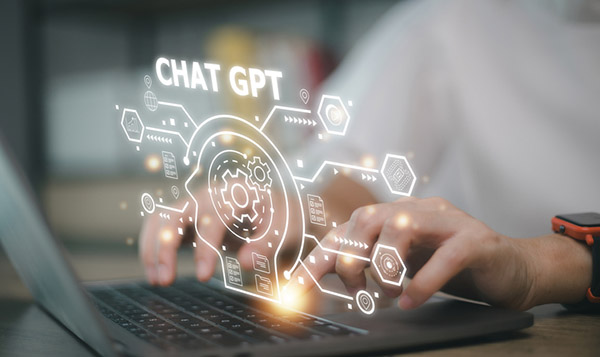OpenAI’s GPT-4 Aces Higher Learning Exams: What This Means for the Future of Education and Robotics
ChatGPT can not only pass the bar exam, but it could also help program and direct robots more easily.
OpenAI’s recently announced GPT-4 version of its ChatGPT text-generating artificial intelligence program is reportedly capable of “human-level performance” on many professional tests, beating 90% of human test-takers.
According to the company, GPT-4 reached the 90th percentile on a simulated bar exam, the 93rd percentile on an SAT reading exam, and the 89th percentile on the SAT Math exam. Thanks to advances such as streamlining and large data sets, it produces fewer incorrect answers and is less likely to touch on taboo topics, said OpenAI.
Despite some flaws and limitations, GPT-4’s capabilities are impressive, posing concerns about what else AI and robotics can do or if they will surpass human ability in education and other sectors.
ChatGPT is shifting education
Educational institutions have already found the rapid evolution of AI alarming, and the launch of GPT-4 may raise more questions. Slate noted that students have increasingly turned to cheating or shortcuts with AI-generated text.
Because such content isn't technically plagiarized but rather taken from multiple sources and configured to the writer’s prompts and specifications, it makes it difficult for teachers to check for originality. A new arms race has begun.
While it’s clear that algorithms can produce written content, but it also brings up some considerations for rethinking assessments overall. Traditionally, the Scholastic Aptitude Test (SAT) is one of the most feared tests for prospective college students.
The SAT consists of 154 multiple-choice questions involving reading, writing, and arithmetic. This math section is further divided into a no-calculator and a calculator-allowed sections.
Taking the SATs successfully allows colleges and universities to create an accurate profile of a student’s ability to learn and retain the material. But with AI answering in students’ stead, some educators question whether tests like the SATs are a valid way to assess students’ learning abilities if these programs can easily ace them.
People can't store and retrieve the troves of information that software can, nor do exams consider how students can retain and use this knowledge. Many educators and industry observers note that SAT scores don't indicate how well people will perform in their careers.
On the other hand, AI could help rework tests and school requirements to be more tailored to a diverse student population’s needs and goals. It could also be used as a tool to gauge students’ critical thinking skills by having them assess generated texts and see how they compare with human work.
AI and the rising capabilities of robotics
Besides the SATs, GPT-4 scored high on a bar exam, outperforming most law school graduates. Aspiring lawyers in the U.S. must pass this two-day test to practice law, but what does it mean for other industries?
In just a few months, ChatGPT advanced to a level where it could pass bar exams. It's no wonder that many people wonder if AI and robotics will replace them at work, but these advances also offer industries new tools for people and robots to work together to be great than the sum of their parts.
AI can already keep a robot arm from colliding into a bin wall as it picks up an object. Autonomous mobile robots (AMRs) use machine learning to navigate through increasingly complex, dynamic environments such as warehouses and factory floors. Machine learning is enabling new generations of advanced driver-assist systems (ADAS) and for vehicles and drones to move to higher levels of autonomy.
With large language models and existing text- or speech-recognition software, AI could enable workers to control robots through natural language commands. Software could enable operators to interact with, adjust, and supervise machines more quickly and efficiently.
In addition, ChatGPT can analyze industrial data and patterns to predict machine failures, allowing maintenance to be done early to prevent and avoid downtime. There are already demonstrations of ChatGPT being used to generate code for robotics and industrial automation.
All of this could lead to easier troubleshooting and allow robots to run more effectively on their own, ultimately enabling human workers to focus on more value-added tasks. Companies will have to review which processes can be automated and which require a human touch, such as customer service or more valuable tasks.
As noted in the article “Gen Z Roboticists Important in the Age of ChatGPT,” millennials and zoomers will make up about three-quarters of America’s workforce by 2030. This population is ripe with digital natives who are excited to work with emerging tools like ChatGPT.
AI like GPT-4 will always be met with concern, awe, or even fear. Rather than worry about its capabilities, however, humans and industries should seize the opportunity to work with and take advantage of this cutting-edge technology.
About the author
Erika Robinson is a freelance writer interested in emerging technology trends. She is currently focusing on AI and its applications in various sectors.













